Electric cars have a reputation for being more expensive than their traditional internal combustion engine (ICE) counterparts. But improvements in technology mean that the gap is closing every day — up to the point where many electric cars are cost-competitive with their petrol-based equivalents.
There’s a considerable selection of affordable electric cars that provide all the benefits of an EV without really breaking the bank. Here’s our list of our favorite cheapest electric cars available in the US today — and you should be paying attention to cheap EVs.
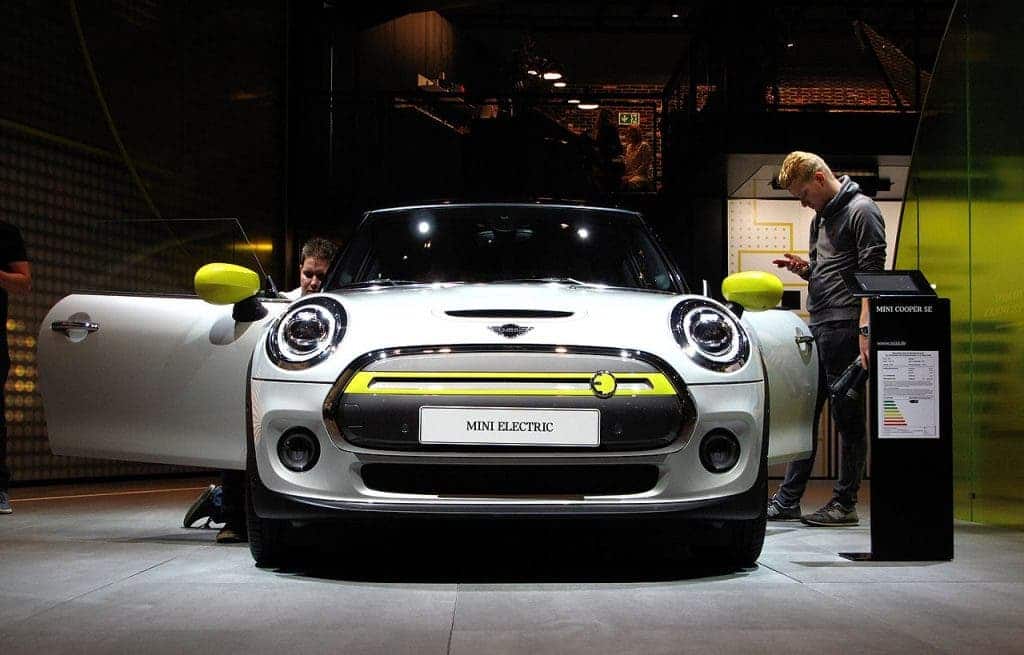
Why cheap electric cars matter
As the name suggests, electric vehicles run (at least in part) on electricity. Instead of having an ICE, they are powered by electric motors for propulsion. The motor derives energy from rechargeable batteries (typically lithium batteries).
EVs have actually been around for more than a century but not until recently they have become mainstream around the world, and they offer a few important advantages compared to “regular” cars.
Thanks to not having a clutch, gearbox, and even an exhaust pipe, they are significantly quieter and offer a smoother ride than conventional gasoline-driven vehicles. Until recently, standard EVs were capable of covering somewhere between 93 and 105 miles (150 km to 170 km) before needing to be recharged, with variations depending on the actual model. But now, it’s not uncommon for electric cars to have autonomy well over 200 or even 300 miles.
As well as being two to four times more efficient than ICE engine models, electric vehicles can reduce the world’s reliance on oil-based fuels and can deliver significant reductions in greenhouse gas emissions. Plus, they are well suited to solve air pollution issues, a global health problem, and can drive advances in battery technology.
Electric vehicles fleets are currently expanding at a fast pace in several of the world’s largest vehicle markets. This is thanks to a dropping costs of batteries and EVs and an expanding charging infrastructure network. Charging stations are usually installed by utility companies as on-street facilities. They can even be situates at workplaces.
“While they can’t do the job alone, electric vehicles have an indispensable role to play in reaching net-zero emissions worldwide,” Fatih Birol, Executive Director of the IEA, said in a statement. “Current sales trends are very encouraging, but our shared climate and energy goals call for even faster market uptake.”
EV sales rose 41% (to about three million electric cars) in 2020, with Europe overtaking China as the world’s main buyers, according to the International Energy Agency (IEA). Sales will continue growing through this decade, with the number of EVs registered around the world increasing from 10 million today to 145 million in 2030, IEA said.
Similar optimism is shared by the consultancy HIS Markit, which identified 2027 as the “tipping point” for EVs. That year, EVs will reach manufacturing cost parity with ICE vehicles in Chile and soon thereafter in the EU and the US. Of the forecasted 89 million vehicles sold in 2030, the consultancy predicts 23.5 million will be electric (about 27%).
There are plenty of options to choose from regarding electric vehicles, at least in the US. But how expensive are they and which is more convenient? We compiled a list of the cheapest models currently available in the market. They all have different features, with the main differences being the autonomy they offer and the level of comfort.
Mini Cooper SE ($30.750)

While Mini vehicles ARE USUALLY more expensive than their mainstream counterparts, the company is now trying something different with its Mini Cooper SE — the cheapest electric car on sale today in the US. With an estimated 100 miles of range, it can travel less than other models but it’s still enough for most commutes.
Mini had already released an electric vehicle in 2008, the Mini E, but it was the release of the Cooper SE in 2020 that gave the company a fully sorted electric runabout. It’s a tiny two-door with a fast charger that can restore 80% of its range in just 40 minutes. It’s stylish, affordable and quick but it’s also the lowest-range EV currently on sale.
The autonomy of the Mini Cooper SE comes at about 115 miles (185 km). Its closest competitors, the 40-kWh Nissan Leaf and Hyundai Ioniq achieve 149 and 170 miles, respectively. The Cooper SE is powered by an electric motor between its front wheels that’s fed by a 32.6-kWh lithium-ion battery. In a test run by MotorTrend, it sprinted to 60 miles per hour in six seconds, faster than other models from Mini.
For the price, the electric Mini is a pretty good alternative for city usage. You won’t go very far on it outside town, but it’ll easily get you through most days.
Nissan Leaf ($32.620)
The Nissan Leaf is the second-least expensive electric vehicle in the US, with 149 miles of range in its affordable base trim. It has a slightly better autonomy than the Mini, and an optional larger battery-pack version is also available, enabling the Nissan Leaf to travel up to 226 miles. The car made its debut over ten years ago with a range of 73 miles and has been regularly improved with new models ever since.
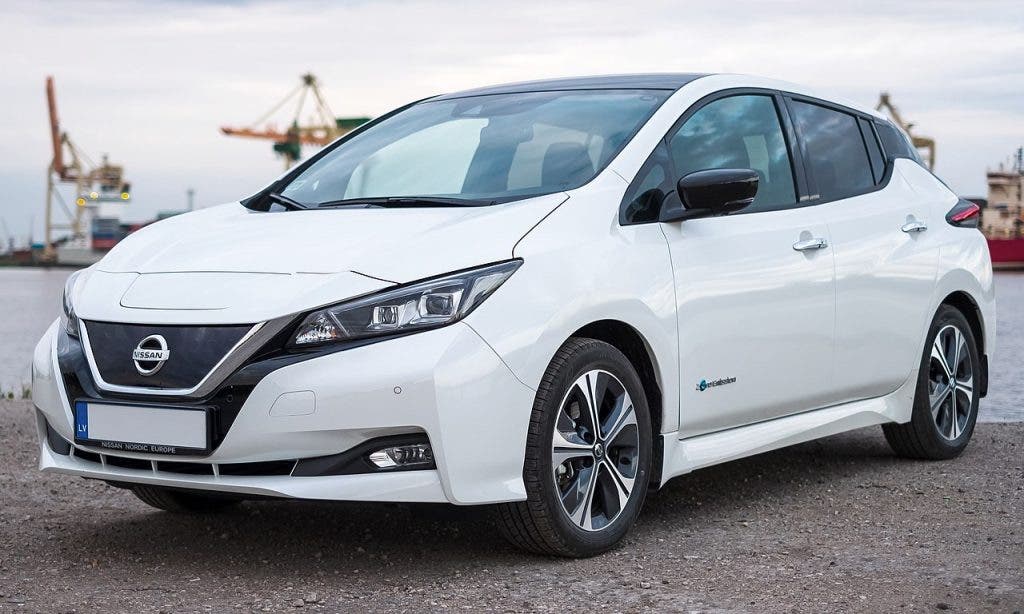
The Nissan Leaf comes standard with a 40-kWh lithium-ion battery and an electric motor that makes 147 horsepower (hp). Plus versions up the ante with a 62-kWh battery and a motor with 214 hp. It benefits from a quiet ride with little road and wind noise entering the cabin but it has limited storage and back seats that don’t fold flat.
Its e-Pedal feature allows the driver to shift between regenerative braking modes. One mode allows the car to coast when the driver lifts off the throttle and another that slows the car when the drivers take the foot off the gas and uses that energy to recharge the battery. It can be plugged either into a 120-volt or to a 240-volt outlet.
Hyundai Ioniq Electric ($34.250)
With impressive specs as well as a refreshing new look at car design, the Ioniq Electric is the third-least expensive electric vehicle in the US. It has a 170-mile range, which is probably enough for most daily driving scenarios but it’s still below some of the competition. Other electric vehicles like the Tesla Model 3 offer 250 miles range at a higher cost.
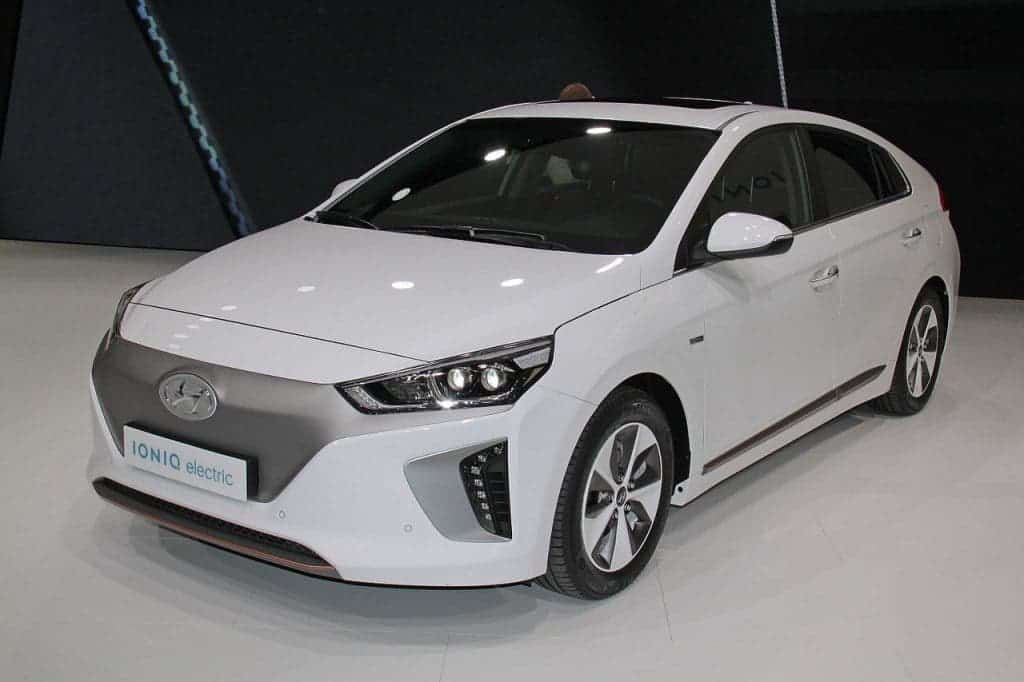
The Ioniq has a 38.3-kWh battery, which powers a 100-kW electric motor. The charging ability is one of its most impressive features, supporting both 400V and 800V charging without additional adapters. This means that it can charge from 10% to 80% in 18 minutes with a 350kW charger. Or that you can get 100km of range in five minutes.
It’s equipped with an eight-inch touchscreen that includes Apple CarPlay and Android Auto with Bluetooth connectivity. There are two front-row USB ports and an eight-speaker premium audio system. The Ioniq is compatible with Hyundai’s Blue Link smartphone app, which allows remote monitoring and control of vehicle functions.
Chevrolet Bolt ($37.495)
The Chevrolet Bolt EV is one of the older cars on this list and one of the least expensive ones in the market today. It offers 259 miles of total range and a roomy interior, with accurate steering and linear acceleration. The range number is competitive with other mainstream EVs including the Kia Niro and the Tesla Model 3.
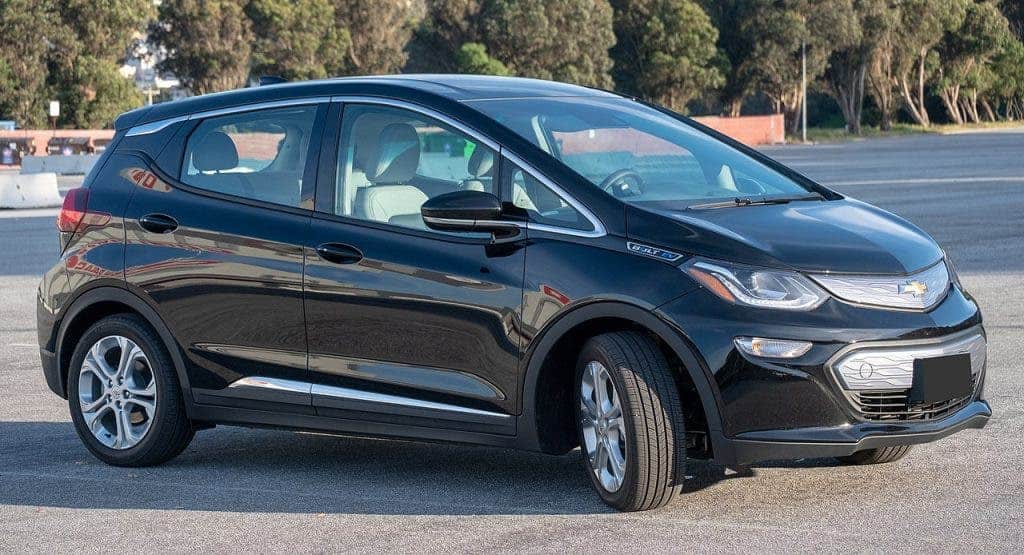
The Bolt charges at a rate of four miles per hour with a standard 120-volt portable charge cord and reaches a full charge in about 10 hours with a 240-volt cable. Under the metal, it packs a front-axle motor and 66-kWh lithium-ion battery. Critics have said that it’s a bit plasticky and with overly firm seats, but overall a very decent EV option.
It features a 10.2-inch touchscreen infotainment system with popular standard features. A subscription-based Wi-Fi hotspot and wireless smartphone charging are also available. The Bolt also includes standard and optional driver-assistance technology, including a 360-degree camera and a rear cross-traffic alert system.
Hyundai Kona Electric ($38.565)
Like the regular Kona, the electric version drives very well and has a decent acceleration. However, as it happens frequently with electric vehicles, brake feel isn’t very progressive. It has a long range of 258 miles, which should be enough to cover most daily driving needs. In testing, it accelerates to 60 mph in just 6.6 seconds.
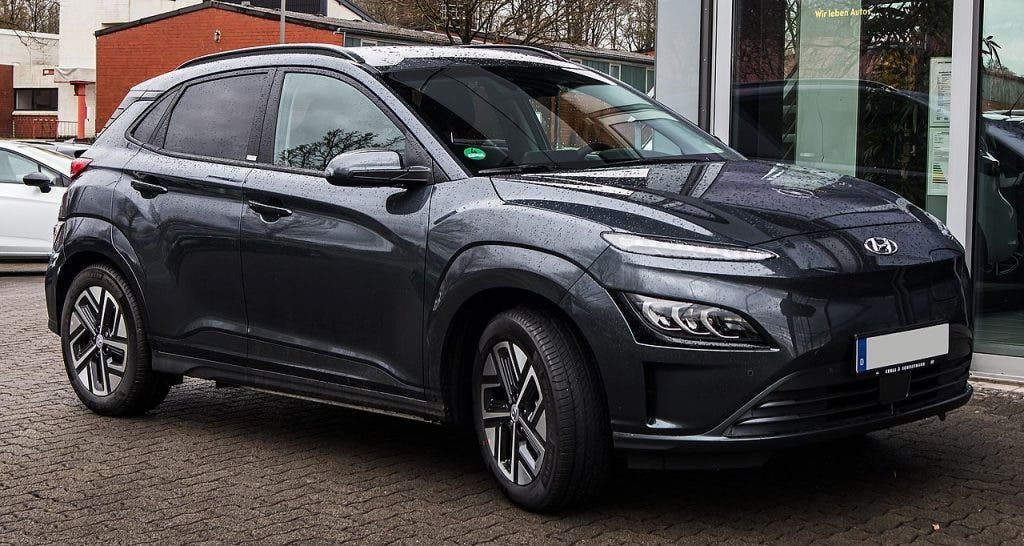
The Kona Electric carries a 64.0-kWh battery, which powers a 150-kW electric motor. It has two USB ports and a seven-inch infotainment touchscreen that includes Apple CarPlay, Android Auto and Bluetooth streaming. The cabin is made from quality materials and feels comfortable, and the cargo area can fit five carry-on suitcases.
The latest 2022 version includes new front and rear bumpers, new wheel designs, and a tweaked interior. Blind-spot monitoring and automated emergency braking are standard across the range, but adaptive cruise control is only offered on the top-spec Limited model. Overall, it’s a fine basis for an electric vehicle and at a good value.
Tesla Model 3 ($38.690)
You wouldn’t expect to see a Tesla on any cheapest list, but the company is no longer just offering high-end cars. Tesla’s Model 3 is the cheapest electric car of the company and an attractive proposition, with 263 miles of range and zero to 60 miles per hour in just 5.3 seconds – figures that many of the cheaper EVs on this list can’t match. It’s a game-changing electric vehicle, with a generous range that’s more accessible to average consumers.
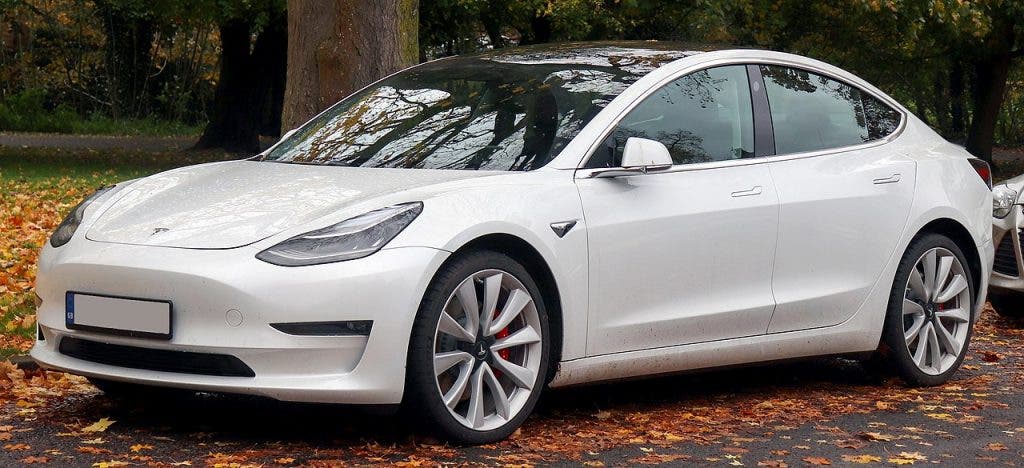
It has a minimalist interior design, a wireless charging pad, USB-C ports, a power-operated trunk and 19-inch wheels. And, even more impressively, its Smart Summon function allows the Model 3 to drive to pull out of its parking spot and come to your location autonomously. It works through an app and you have to be within 200 feet.
Still, not everything is perfect with the Model 3. Nearly everything is controlled via the massive touchscreen and that creates a significant learning curve. The menu layout might be simple but there’s still too many submenus to go through to do simple tasks like adjusting the steering wheel. Also, too much road and tire noise enter the cabin. Although, having said all this, at the end of a the day — it’s still a Tesla.
Kia Niro EV ($40.265)
With long and low proportions, the Kia Niro EV looks more like a tall wagon than a crossover. Kia’s all-electric vehicle, which is also available with gas-only and plug-in-hybrid powertrains, is fairly attractive and packed with desirable standard features. It has a range of 239 miles, which is good for most driving duties besides long road trips.
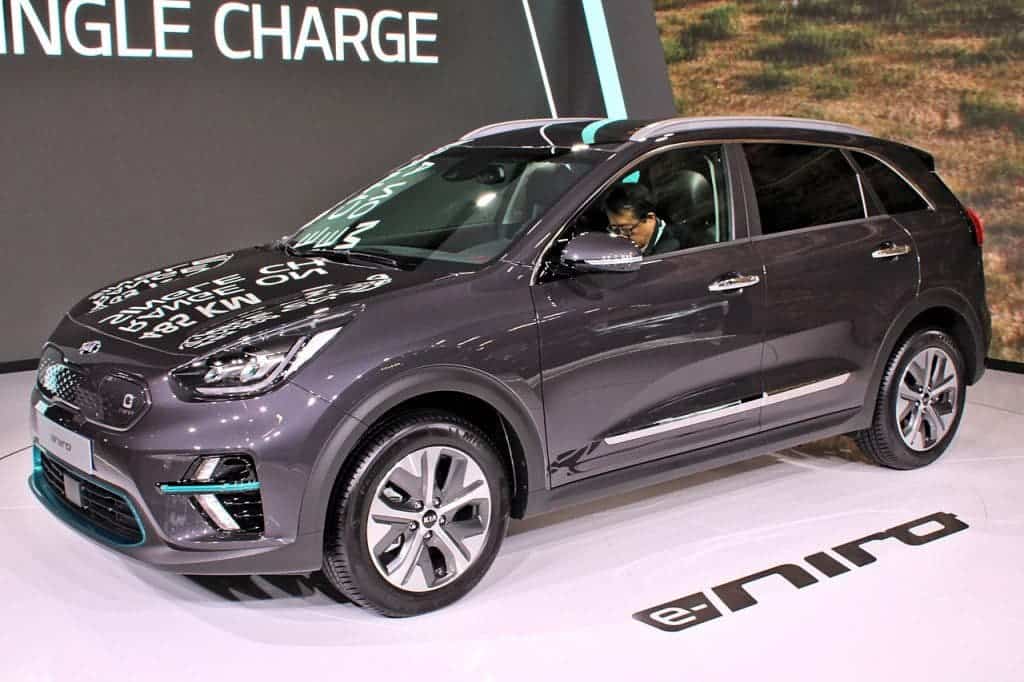
The Niro EV is powered by a single electric motor that produces 201 hp, sent through the front wheels by a one-speed by a one-speed direct drive transmission. It reaches 60 miles per hour in just 6.5 seconds, which is faster than the Chevy Bolt and slower than the Hyundai Kona Electric. It has a 65KwH battery capacity, in line with the rest.
The battery can be recharged using either a 120-volt or 240-volt connection, but the two connections offer different charge times. On a 240-volt connection, the car can be recharged in about nine hours. If you can’t wait that long, the EV offers standard DC fast charge capability, allowing you to recharge the battery to 80% in an hour with a 100-kW connection.
Ford Mustang Mach-E ($43.995)
The Mustang Mach-E is Ford’s first all-electric crossover, designed and named after the company’s iconic pony car. It’s available with either a standard-range 75.7Kwh battery or an extended -range 98.8kWh pack. These feed an electric motor mounted on the rear or both axles. It can go from zero to 60 miles per hour in just 3.5 seconds.
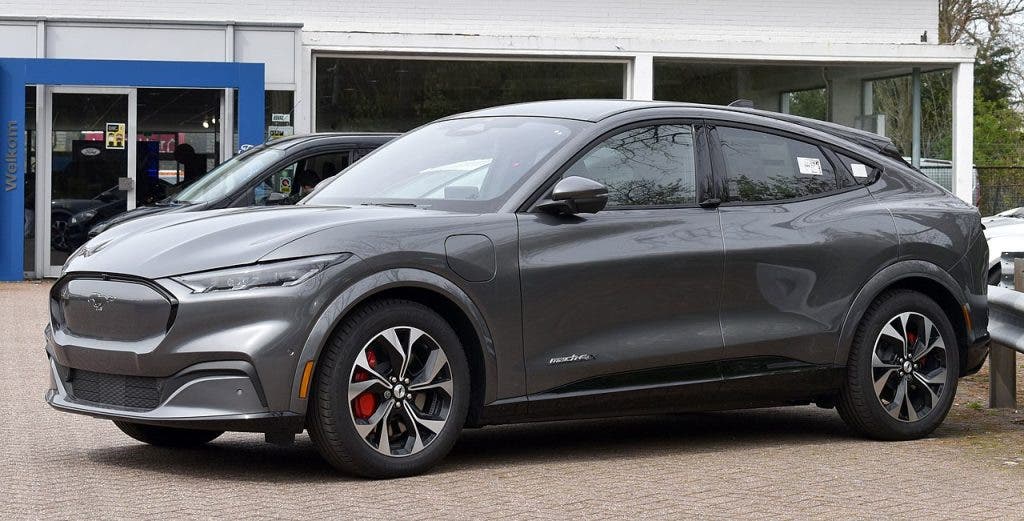
The EV has an estimated range of between 211 and 305 miles, depending on the battery pack and type of electric motor, which isn’t as impressive as other EVs. Every model has a fast-charging capability. The Mach-E comes with a Ford mobile charger that can add 30 miles of range with a 120-volt outlet, and up to 80% of battery life with a 240-volt outlet.
The battery is located under the floor of the car, which allows to optimize cargo and passenger space. Unlike its exterior, the inside of the Mach-E doesn’t have much in common with the regular Mustang. Its dashboard has an attractive digital gauge cluster, dominated by a touchscreen. It also has heated front seats and a panoramic sunroof.
The electric car market is shifting rapidly, offering quick progress almost from month to month. No doubt, by the end of the year, we’ll have even more cars to add to this list. We’ll do our best to keep it updated if this page garners interest.


